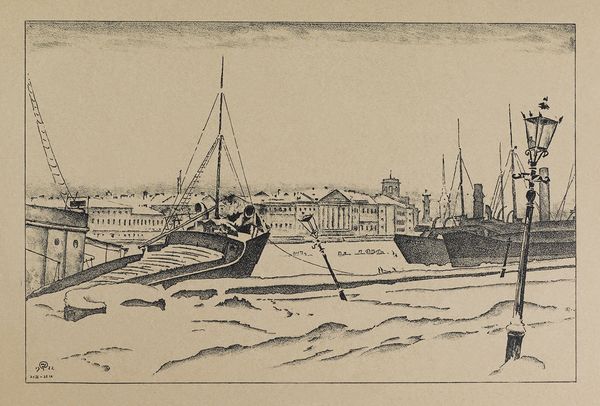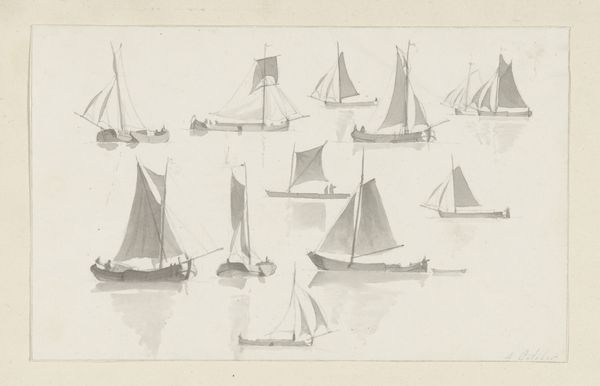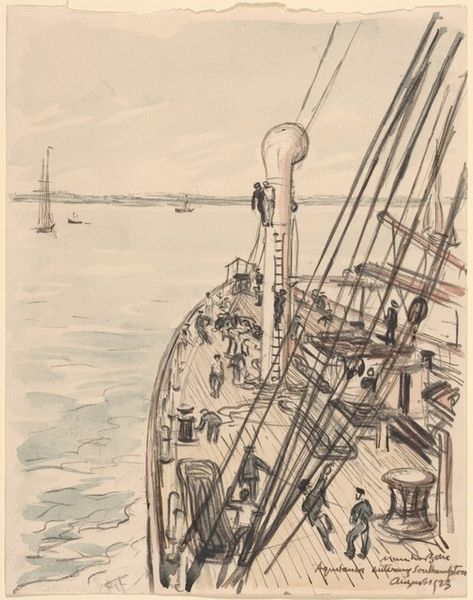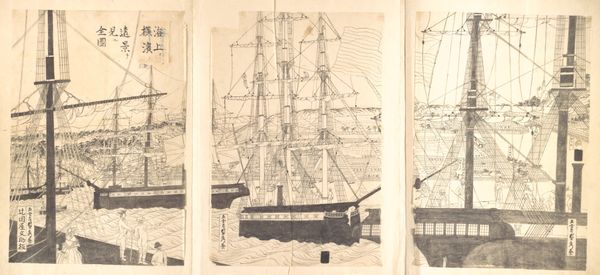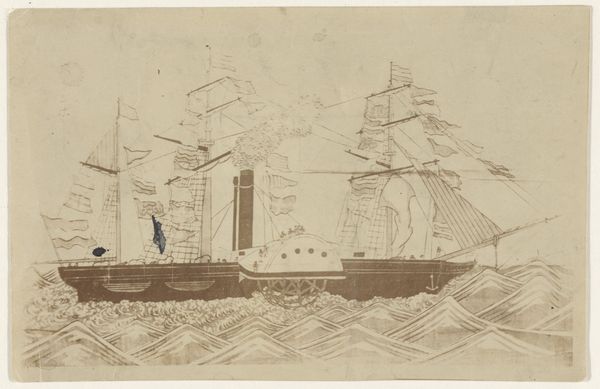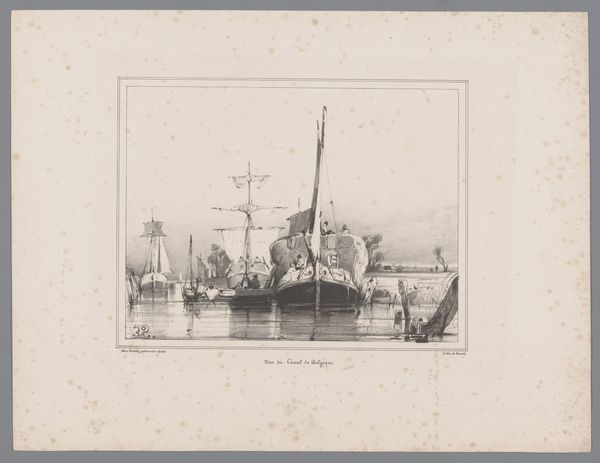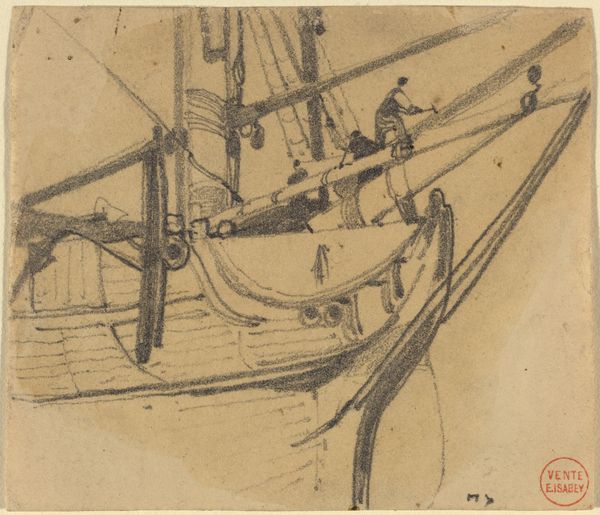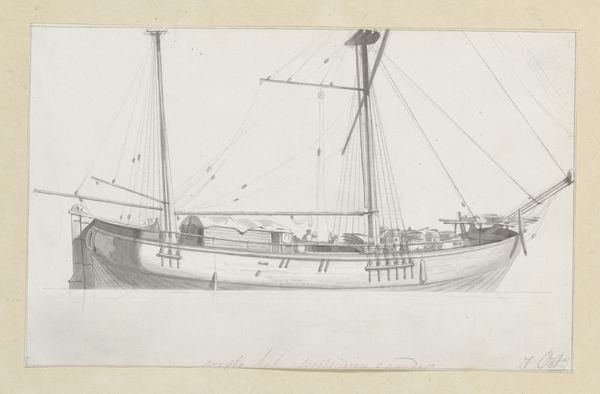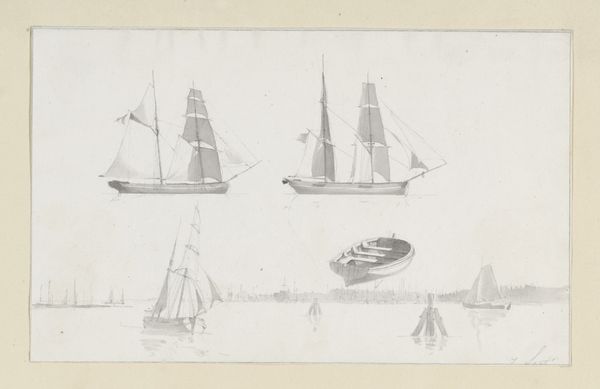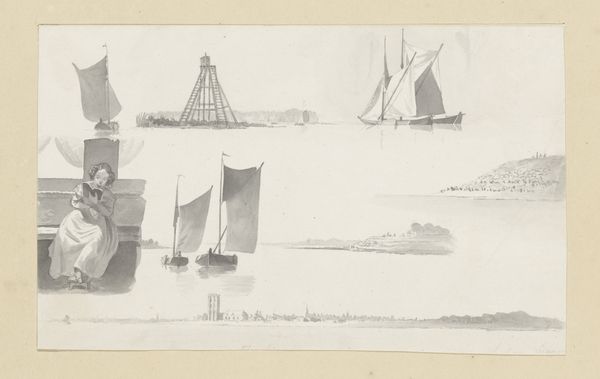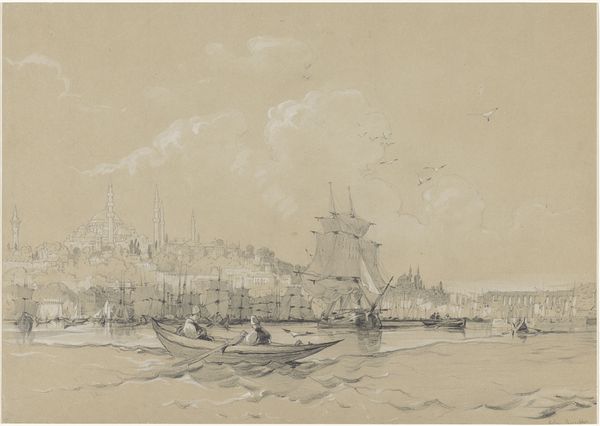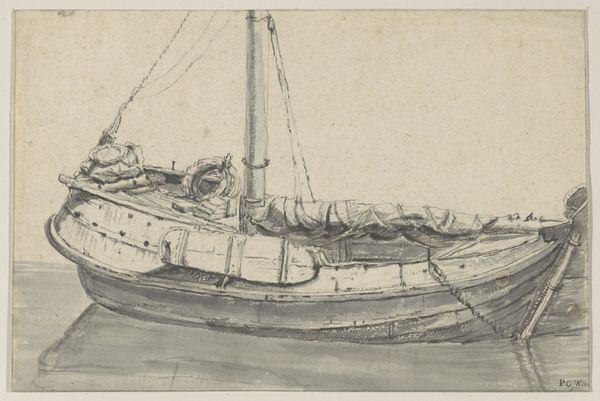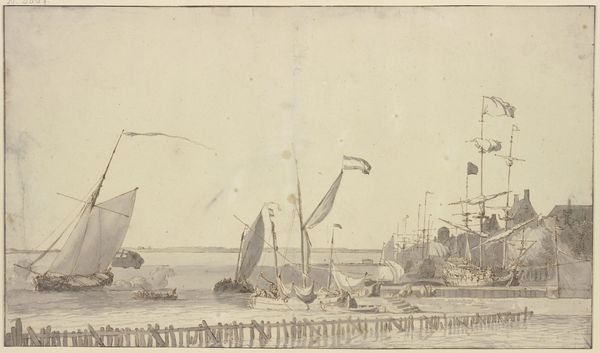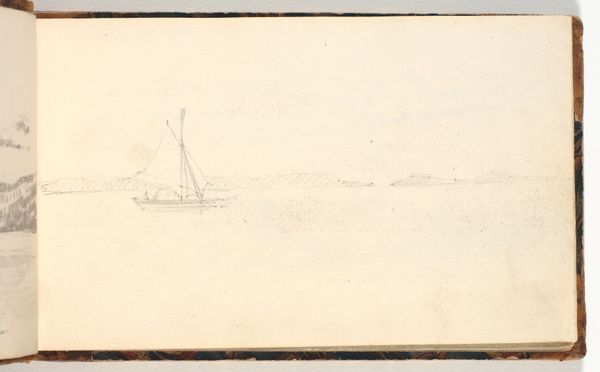
The Tsukiji Hotel in Tokyo (Tokyo Tsukiji hoteru kan) 1870
0:00
0:00
Dimensions: Image (a): 14 1/2 x 9 5/8 in. (36.8 x 24.4 cm) Image (b): 14 1/2 x 9 5/8 in. (36.8 x 24.4 cm) Image (c): 14 1/2 x 9 5/8 in. (36.8 x 24.4 cm)
Copyright: Public Domain
Curator: This triptych woodblock print by Utagawa Hiroshige III, made around 1870, depicts "The Tsukiji Hotel in Tokyo". It’s currently held here at the Metropolitan Museum of Art. Editor: Well, it’s a scene of remarkable contrasts! The hotel looms large, but what catches my eye are the American flags, somewhat awkwardly juxtaposed with the very serene image of Mount Fuji in the distance. It all speaks of trade, the material exchange between cultures. Curator: Precisely! The Tsukiji Hotel was constructed to accommodate the growing number of Western visitors after the opening of Japan. That flag signals Japan’s ambition to integrate into the global order, doesn’t it? The artist would’ve had to reconcile his existing visual vocabulary to include such overt Western symbols, embedding those signs in the consciousness of his audience. Editor: You know, considering this is a woodblock print, I am really thinking about the means of production. Think of all the labor, carving the woodblocks, the layering of colours, and the implications of producing an image on this scale for mass consumption. What do those colors themselves signify to the artist and his audience? Curator: The colors certainly offer some insight into Japanese printmaking tradition. While western style watercolors appear, the pale blues of the sky and water maintain a fidelity to Ukiyo-e tradition, suggesting an older symbolic understanding of Japanese art while portraying this brand new symbol of modernization, that hotel. Editor: So you’re saying that the old modes and forms literally carried the weight of representing this emerging era in Japanese history? This becomes even more poignant, thinking about the working-class consumption of such images as commodities circulating within that era. Curator: Exactly, the work shows Japan navigating a course through rapid change, clinging to some existing symbolism even when representing novelty. Editor: Fascinating to see how material production and visual language intertwined during this pivotal historical moment. Thanks for pointing this out. Curator: My pleasure, it gives such insight to see the layers of cultural meaning right on the surface!
Comments
No comments
Be the first to comment and join the conversation on the ultimate creative platform.
